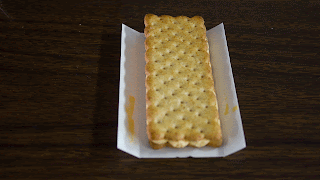Image from the series "Wonderland"
by Kirsty Mitchell
The set "Wonderland" was created by photographer Kirsty Mitchell as a way of honoring her mother who had recently passed away. Mitchell described her mother as a great storyteller and felt that creating a fantasy world through her photography would be a good way to keep her mother's memory alive. The entire set uses bold colors, costuming, props and location to create a story through imagery rather than words. The color purple is used to keep a running continuity throughout the images in this series.
I chose this image in particular both for its bold colors and graphic qualities. This image features a model running through a field, holding an umbrella that releases above it a cloud of blue smoke. The image is cropped in such a way that the model fills the frame from top to bottom. The background elements (the ground, horizon, and sky) recede behind her, with the horizon intersecting at the model's waist. The rows of flowers on the ground create a graphic element that pulls the viewers' eyes to center, further focusing attention on the model/actress (the heroine of the "Wonderland" story). The expression on the subject's face, as well as the cloud of smoke billowing from the top of her parasol, create the illusion of movement, giving the audience the impression that she is running from something. This image (as well as the rest of the images in the "Wonderland" series) are, in my opinion, an excellent example of a photographer's ability to create a narrative solely through imagery.












